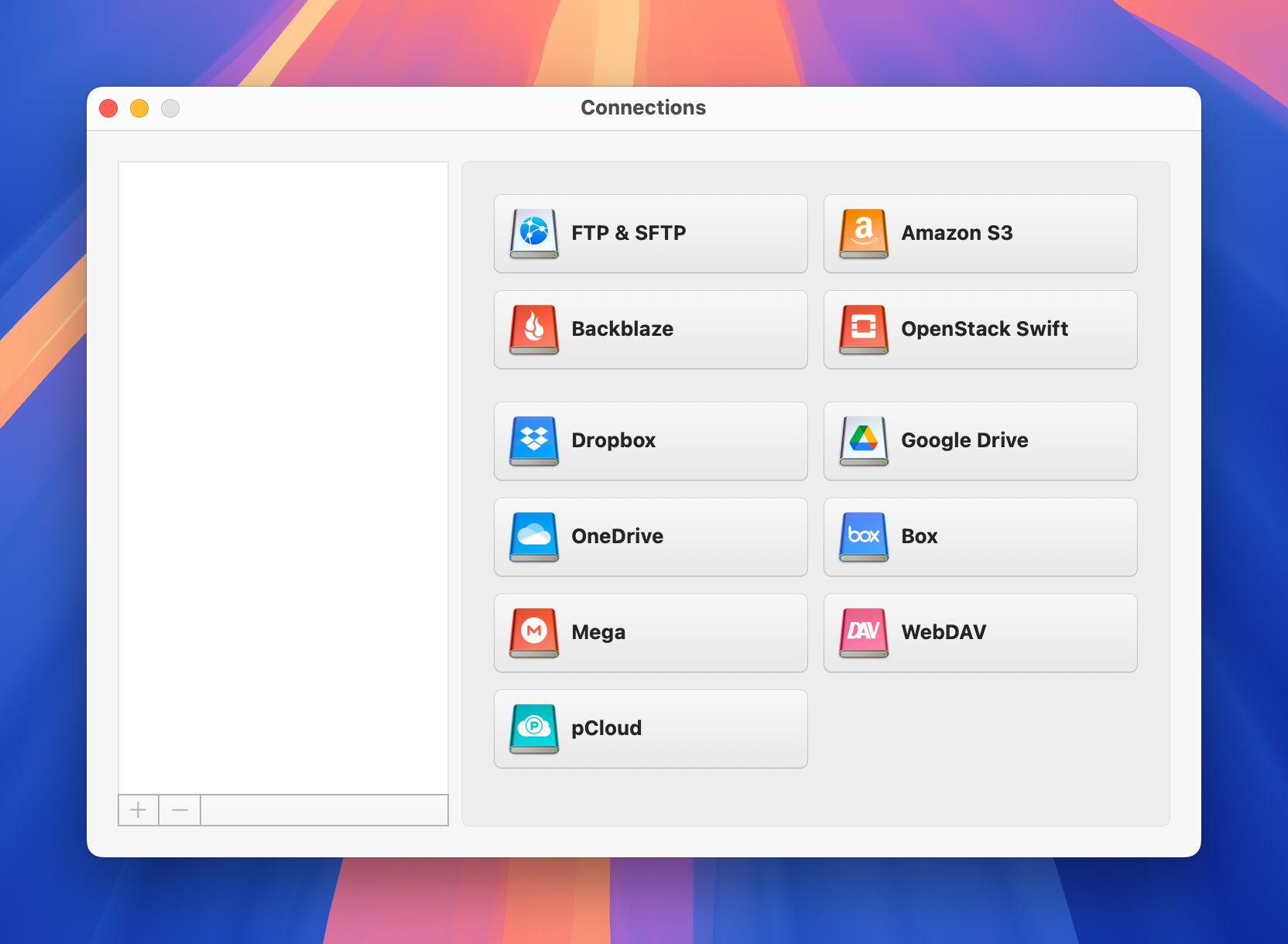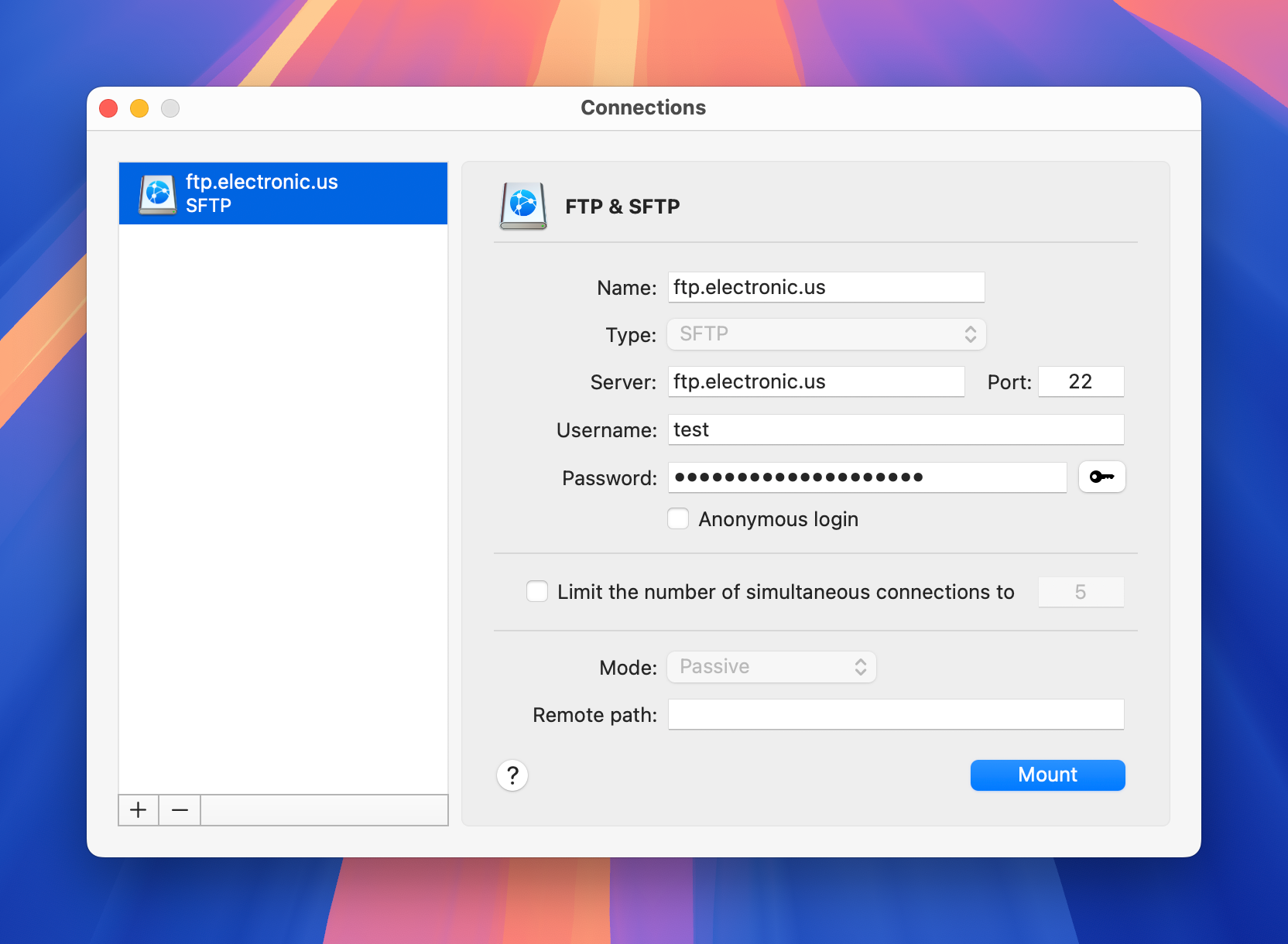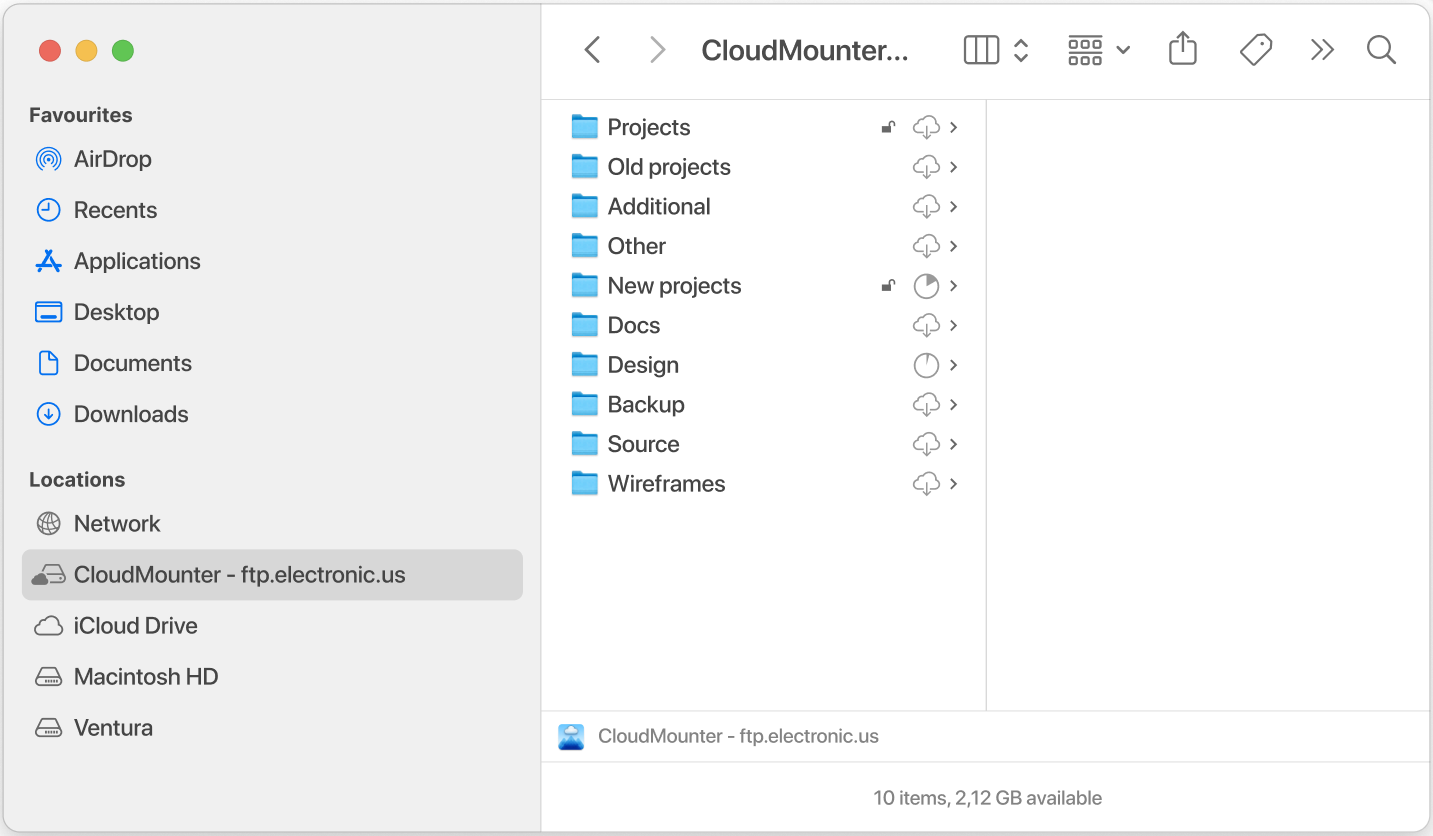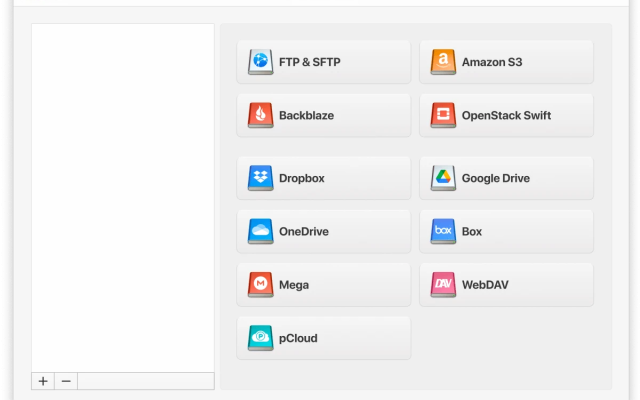Since there’s no native way to mount SFTP on macOS, you need a third-party app to open remote files straight from Finder. CloudMounter is an excellent solution that lets you connect to SFTP servers and manage remote files just like you would with local ones.
You can easily move and organize your files without having to switch between different apps. Let’s take a look at how you can use CloudMounter to map your SFTP servers as local drives on your Mac.
Is it possible to add SFTP server to Finder without third-party apps?
Unfortunately, there’s currently no native way to mount SFTP on Mac. Most people use the “Connect to Server” feature to access files remotely across a network, but it doesn’t support the SFTP protocol.
We recommend using a third-party solution if you want to map an SFTP server as a drive.
There are many apps on the market, but if you want the best experience, using CloudMounter as an SFTP client on macOS is the way to go. In addition to SFTP, our app lets you work with lots of other storage platforms and remote servers. It’s packed with extra features that eliminate the need to install other apps on your computer.
Map your SFTP servers as drives on macOS via CloudMounter
CloudMounter makes it incredibly easy to add SFTP in Finder. You can also use this software to integrate cloud storage into your native file manager for smoother file transfers. Here’s how to use it:
1. Download and install CloudMounter on your Mac.
2. Launch the app and click on “FTP & SFTP.”

3. Now enter the connection type, server name, address, port (usually 22 for SFTP), username and password, and remote path (i.e., the folder on the server you want to connect to).

4. Click on “Mount,” and your SFTP server will be available directly in Finder.

Now you should be able to access your SFTP files in Finder. You’ll also be able to rename, copy, delete, move, and edit them, as if they were stored locally on your Mac.
Why else is CloudMounter interesting
There are lots of other useful features you’ll find in CloudMounter. Here are a few of them:
- Easily manage all your storage in one place.
- Use as many accounts as you want without any limitations.
- Compatible with a wide range of cloud storage services, as well as FTP and WebDAV servers.
- Lets you work offline with online files.
- Client-side encryption adds an extra layer of security to protect your online data.
- Compatible with both macOS and Windows.
Conclusion
While you can connect to FTP servers on macOS, there is no native support for mounting SFTP in the Finder app. CloudMounter is what you need if you want to easily map an SFTP server as a local drive, and work with other storage services as well.
You can add as many accounts as you want and work with multiple remote servers and storage platforms simultaneously. With CloudMounter, managing your remote files becomes as simple as working with files stored locally on your Mac.

